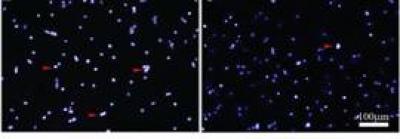The death of retinal ganglion cells is a hallmark of many optic neurodegenerative diseases such as glaucoma and retinopathy. Oxidative stress is one of the major reasons to cause the cell death. A latest study, published in the Neural Regeneration Research (Vol. 8, No. 25, 2013), has shown that grape seed extract can protect retinal ganglion cells against oxidative stress-induced apoptosis. In this study, Prof. Kwok-Fai So, an academician of Chinese Academy of Sciences, and Prof. Daxiang Lu from Jinan University, China show that oligomeric proanthocyanidin, enriched in grape seeds, has a protective effect on retinal ganglion cells against oxidative stress-induced injury, as confirmed by using both RGC-5 cell lines and retinal explant culture. These findings imply a potential application of oligomeric proanthocyanidin in the clinical treatment of many neural diseases, from glaucoma, ischemia to neurodegenerative disease.

Oligomeric proanthocyanidin reduced H2O2-induced apoptosis in retinal ganglion cell line RGC-5 (Hoechst 33342 staining). The left: H2O2 (400 μM) group; the right: and H2O2 (400 μM) + oligomeric proanthocyanidin (20 μM) group. The arrowheads pointed to apoptotic cells.
(Photo Credit: Neural Regeneration Research)
Source: Neural Regeneration Research